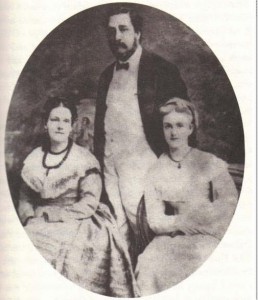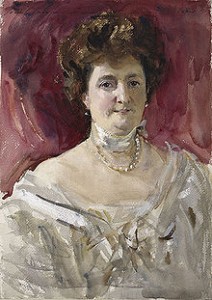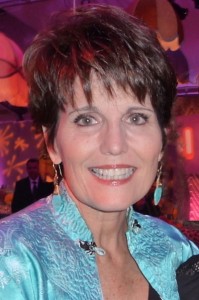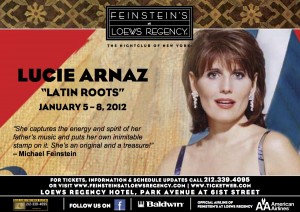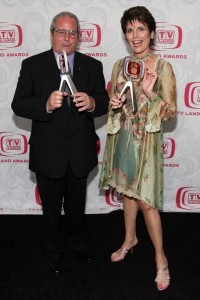 Israel López Valdés, better known as Cachao (/kəˈtʃaʊ/ kə-chow; September 14, 1918 – March 22, 2008), was a Cuban double bassist and composer. He is considered one of the most influential charanga bassists of all-time, the co-creator of the mambo and a master of the descarga (improvised Cuban jam sessions). He has a star on the Hollywood Walk of Fame and has won several Grammy Awards since the 1990s.
Israel López Valdés, better known as Cachao (/kəˈtʃaʊ/ kə-chow; September 14, 1918 – March 22, 2008), was a Cuban double bassist and composer. He is considered one of the most influential charanga bassists of all-time, the co-creator of the mambo and a master of the descarga (improvised Cuban jam sessions). He has a star on the Hollywood Walk of Fame and has won several Grammy Awards since the 1990s.
Cachao was born on September 14, 1918 in Belén, a neighbourhood in Old Havana, into a family of musicians, many of them bassists—around 40 or more in his extended family. He was born an raised in the same house José Martí was born.
As an 8-year-old bongo player, he joined a children’s septet that included a future famous singer and bandleader, Roberto Faz. A year later, already on double bass, he provided music for silent movies in his neighborhood theater, in the company of a pianist who would become a true superstar, the great cabaret performer Ignacio Villa, known as Bola de Nieve.
His parents made sure he was classically trained, first at home and then at a conservatory. In his early teens he was already playing contrabass with the Orquesta Filarmónica de La Habana, under the baton of guest conductors including Herbert von Karajan, Igor Stravinsky and Heitor Villa-Lobos. He played with the orchestra from 1930 to 1960.
He played the double bass with his late, older brother, the multi-instrumentalist/composer Orestes López, who was known as “Macho”. The brothers, both members of the charanga Arcaño y sus Maravillas, composed literally thousands of danzones together and were a major influence on Cuban music from the 1930s to the 1950s. They introduced the nuevo ritmo (“new rhythm”) in the late 1930s, which transformed the danzón by introducing African rhythms into Cuban music, which led to mambo. They co-wrote the danzón “Mambo” which was called the “Mother of all Mambos” by Cuban writer G. Cabrera Infante.
He composed “Chanchullo”, a danzón on which “Oye cómo va” is based. “Chanchullo” was released in 1957 as a single by Gema. In 1958, Arcaño y sus Maravillas
One day in 1957 Cachao gathered a group of musicians in the early hours of the morning, energized from playing gigs at Havana’s popular nightclubs, to jam in front of the mics of a recording studio. The resulting descargas, known to music aficionados worldwide as Cuban jam sessions, revolutionized Afro-Cuban popular music. Under Cachao’s direction, these masters improvised freely in the manner of jazz, but their vocabulary was Cuba’s popular music. This was the model that would make live performances of Afro-Cuban based genres, from salsa to Latin jazz, so incredibly hot.
These descargas were released in 1957 by the Panart label under the title Cuban Jam Sessions in Miniature: “Descargas”. They have been named by many critics as one of the most essential Cuban records of the 1950s, including being cited by the book “1,000 Recordings to Hear Before You Die”. Between 1957 and 1959 he recorded many more descargas in the Panart studios. These recordings were released in the following years by Kubaney and Maype, and re-released by EGREM. He also recorded descargas with Tojo’s orchestra and Chico O’Farrill’s All-Stars Cubano amongst other ensembles. He worked alongside Peruchín, Tata Güines and Alejandro “El Negro” Vivar.
Exile.
In 1961, Cachao went into exile. He crossed the Atlantic by boat, reaching Madrid thanks to Ernesto Duarte, who demanded him to play with his orchestra and where he spent a few years touring the country, until the orchestra finally broke up in 1963. Then he moved to the U.S. as seen in the documentary film La época, Cachao was one of the most in-demand bassists in New York City, together with the likes of Alfonso “El Panameño” Joseph and Bobby “Big Daddy” Rodríguez. Joseph and López substituted for each other over a span of five years, performing at New York City clubs and venues such as the Palladium Ballroom, The Roseland, The Birdland, Havana San Juan and Havana Madrid. While Cachao was performing with Machito’s orchestra in New York, Joseph was recording and performing with Cuban conga player Cándido Camero. When Joseph left Cándido’s band to work with Charlie Rodríguez and Johnny Pacheco, it was Cachao who took his place in Cándido’s band.
For a while, he had two distinct musical personae. In the New York salsa scene he was revered as a music god, with homage concerts dedicated to him, and records of his music produced by musicologist René López in 1977, after over 15 years without recording as a leader. Thanks to López, Cachao was “rediscovered” by the thriving Latin music scene in NYC. Conversely, in Miami, he was an ordinary working musician who would play quinceañeras and weddings, or back dance bands in the notorious Latin nightclubs of the Miami Vice era.
Late career.
In the 1990s, actor Andy García produced the recordings known as Master Sessions and big concerts honoring his legacy. Since then, Cachao became again a household word among Cubans and his reputation continued to grow. His nephew, Orlando “Cachaíto” López, a prolific bassist as well, became one of the mainstays of the famed Buena Vista Social Club group.
Cachao’s music has been featured in movies such as The Birdcage and on the Grand Theft Auto: Vice City soundtrack. Andy García produced two documentaries about this music, Cachao… como su ritmo no hay dos (“With A Rhythm Like No Other”) (1993) and Cachao: Uno más, which premiered in April 2008 at the San Francisco International Film Festival. The inspiration for Cachao: Uno más, made by San Francisco State University’s DOC Film Institute, came largely from a concert Cachao played at Bimbo’s 365 Club in San Francisco, and the film’s premiere was followed by a tribute concert with the John Santos Band at Yoshi’s Jazz Club SF.
Death.
López died on the morning of March 22, 2008 in Coral Gables, Florida, at the age of 89. He died from complications resulting from kidney failure. Following his death, the Cachao’s Mambo All-Stars were formed in his memory. This band, comprising his former bandmates, recorded in his honour.
Awards and recognition.
In 1994, López was inducted into Billboard’s Latin Music Hall of Fame. López has won several Grammy Awards for both his own work and his contributions on albums by Latin music stars, including Gloria Estefan. In 1994, he won a Grammy for Master Sessions Volume 1. In 2003, he won a Latin Grammy for Best Traditional Tropical Latin Album together with Bebo Valdés and Carlos “Patato” Valdés for El arte del sabor. López won a further Grammy in 2005, again for his album ¡Ahora Sí!. In 2012, a posthumously released album, The Last Mambo, won the Grammy Award in the Best Tropical Latin album category.
On June 11, 2006, López was honored by Union City, New Jersey with a star on the Walk of Fame at Union City’s Celia Cruz Park.
http://youtu.be/-znYzFR5CNk
Discography.
1957: Cuban Jam Sessions in Miniature “Descargas” (Panart)
1958: Camina Juan Pescao (Duher)
1958: Con el ritmo de Cachao (Kubaney)
1958: El gran Cachao (Kubaney)
1959: Cuban Music in Jam Session (Bonita)
1961: Descarga (Maype)
1961: Descargas con el ritmo de Cachao (Modiner)
1962: Jam Session With Feeling (Maype)
1971: Cachao te pone a bailar (Teca; archival, recorded 1959-61)
1977: Descarga ’77 (Salsoul)
1977: Dos (Salsoul)
1986: Descarga ’86 (Tania)
1994: Master Sessions, Volume 1 (Crescent Moon)
1995: Master Sessions, Volume 2 (Crescent Moon)
1997: Superdanzones (EGREM; archival, recorded in 1961)
2000: Cuba linda (EMI)
2004: Ahora sí (Univisión)
2007: Jazzcuba, Volumen 2 (Warner Music; archival, recorded 1959-60)
with Bebo Valdés
2011: The Last Mambo (Sony)
http://youtu.be/-Jzl6FHzPyk
Singles.
1957: “La cayuga / Cuarenta que son uno” (Duarte)
1957: “A gozar timbero / Sorpresa de flauta” (Panart)
1957: “Pamparana / Cógele el golpe” (Panart)
1958: “Descarga cubana / Goza mi trompeta” (Capitol)
1961: “Descarga general / El manicero” (Discos Latino)
With All-Stars Cubano
“Descarga número uno / Descarga número dos” (Gema, 1957)
With Arcaño y sus Maravillas
“El que sabe, sabe / Chanchullo” (Gema, 1957)
Tributo a Noro (Alegre, 1964)
With Patato & Totico
Patato y Totico (Verve, 1967)
El arte del sabor (Blue Note, 2001)
Filmography.
Cachao… como su ritmo no hay dos (1993)
Cachao: Uno más (2008)
Agencies/Various/Wiki/InternetPhotos/youtube/thecubanhistory.com
The Cuban History, Hollywood.
Arnoldo Varona, Editor.







